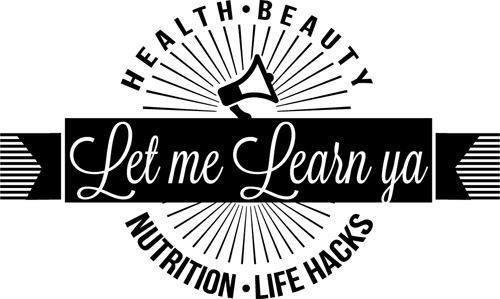Table of Contents
So you want to get cooking…but how?
Y’all know home cooking can save you a billion dollars, tastes a jillion times better than store-bought, and is a gazillion times better for your health. But cooking is a lot like hunting; if you don’t go in with the right tools, you might end up being the hunted rather than the hunter (that analogy kinda sucks. Sorry).
I’m sure you’re asking, “where do I start? What cooking utensils do I need?”
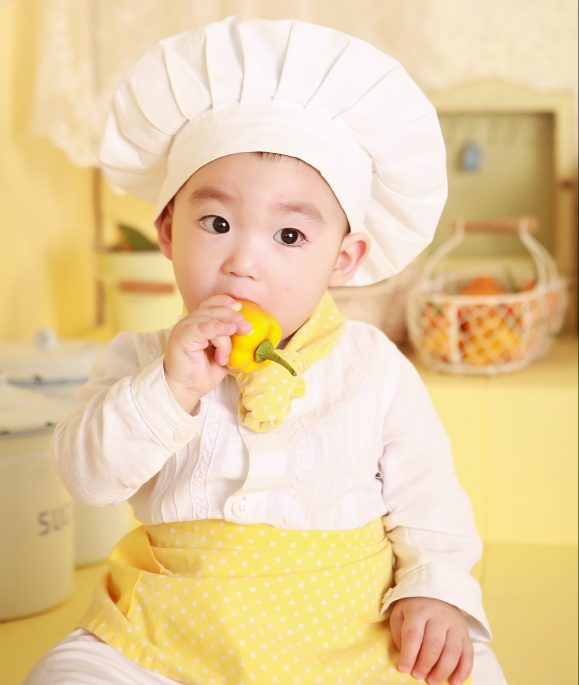
To help you not be like baby chef, I created a list of the absolute basics you’ll need to get started. They aren’t going to make you a super fancy chef, but they’ll allow you to make basic dishes. Once you feel confident, you can branch out to crazier tools like slow cookers, food processors, Vitamix blenders, and pressure cookers (Best. Thing. EVER.).
#1: A Sharp Knife
This is the MOST important cooking utensil you can have in your kitchen. You’ll do more cutting and chopping than mixing, baking, stirring, and measuring combined. A dull knife will make your life miserable and the right one will make your cooking life a breeze.
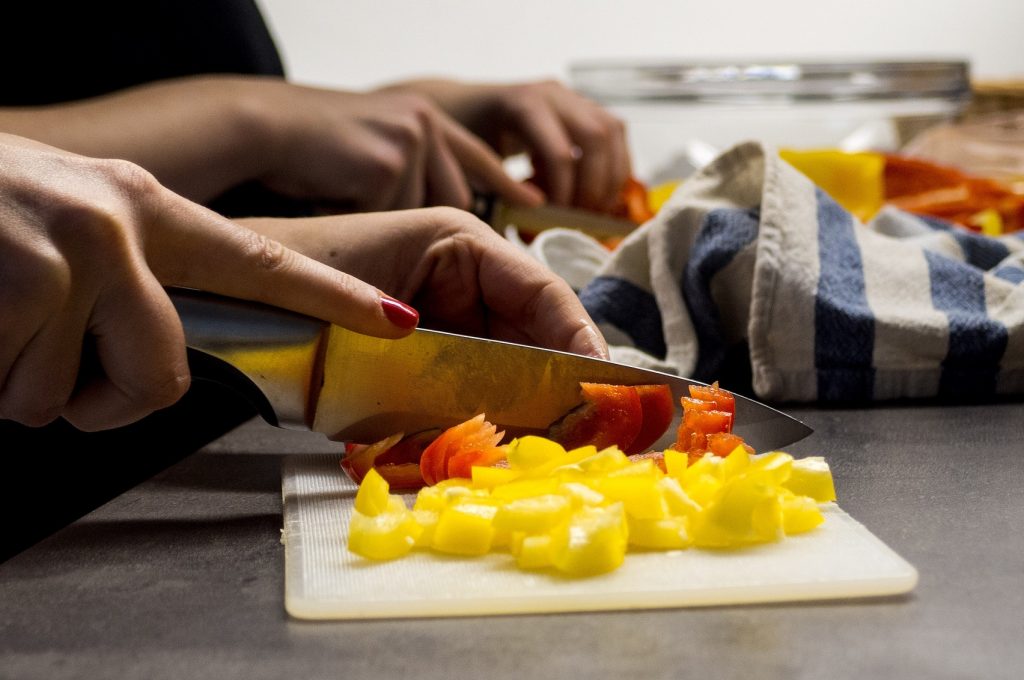
My BFF asked me the other day, “Can you write something about how to cut tomatoes correctly?” I responded with, “Your knife sucks. Get a better one and you’ll cut them correctly.” I’m just the sweetest!
Wusthof 5′ Santoku: $59.95

I choose this knife for practically EVERYTHING. It’s light-weight, easy-to-handle, sharp-as-hell, and extremely versatile. I’ve had this knife for about five years now, and it still looks and cuts like it’s brand new.
This is just one woman’s opinion, but if you can only buy one knife, I’d suggest this one.
Wusthof Classic 8′ Chef Knife: $149.95
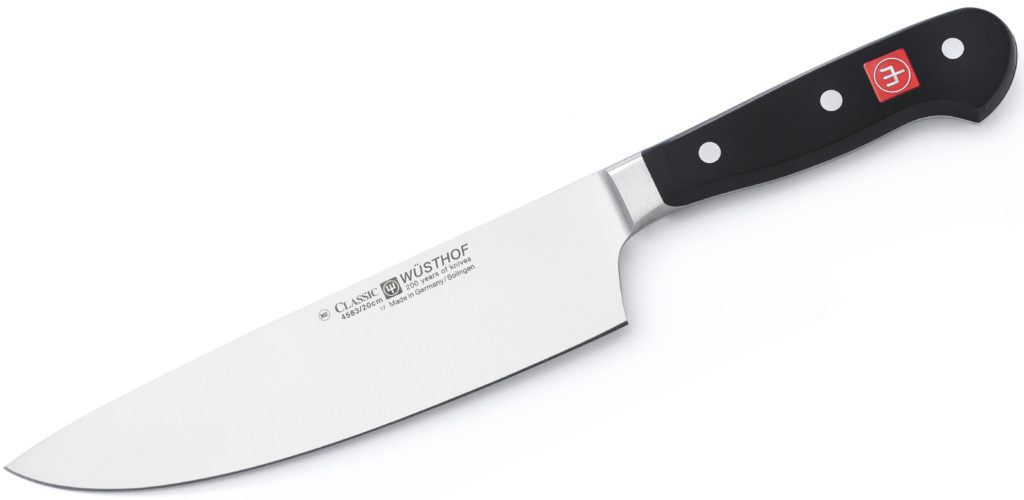
If the santoku is the scrappy, idealistic, super-fast teenager of knives, this bad boy is the grandpappy, old-school, experienced, tank. It’s heavy-duty and can handle anything you throw at it. You would struggle cutting into a raw sweet potato or butternut squash with the santoku, but this guy wouldn’t even bat an eye slicing through them.
Yes, it’s expensive as HELL, but he will never cheat on you, never let you down, and will stay with you until the end of your days.
Note: Good knives will require sharpening once and a while, so you will need to purchase a sharpener at some point. I’ll write a separate post about that later!
#2: Cutting Boards
I have two suggestions: the first suggestion is for wee baby newb chefs and the second for a bit more experienced chefs.
When cooking, you have to be VERY careful not to cross-contaminate your food. You don’t want to use the same cutting board to chop raw veggies that you just used to chop raw chicken

You need cutting boards because what the heck else are you going to cut on? Don’t even think of chopping on your kitchen counter or plates. Not only will you risk cross contamination, but you’ll destroy your counters, plates, and the fancy new knives you just bought.
Therefore, for newbs I recommend:
Joseph Joseph Index Chopping Board Set: $49.00

I have this set in my kitchen and, let me tells ya, this guy is awesome for eliminating cross contamination for the confused individual.
Pros
- Color/picture-coding so you know which board to use for each type of food!
- It comes with its own storage unit
- You can keep it on your counter for easy use
- They’re dishwasher safe and won’t damage your fancy knives
Cons
- They have a white cutting board, which over time shows stains from foods like tomatoes, beets, turmeric, etc. Dumb, but whatever.
- They’re kinda costly. If the price is too steep for you, you can find cheaper versions. However, I can’t give the other versions the the LMLY-stamp-of-approval.
- They’re plastic so the quality bar is somewhat low. I haven’t had any problems though!
For everyone else, I recommend:
Totally Bamboo Cutting Board, Kauai: $19.95

Pros
- This bad boy is the perfect size and weight for new chefs, making it easy to clean and store
- It will handle most basic tasks
- It is stinking cheap when compared to other cutting boards
- Bamboo is a sustainable and renewable source and resists bacterial growth
Cons
- It’s a bit too small to carve up large items easily, such as an entire roast chicken
- Some think that bamboo might dull knives, but tests thus far have not backed this claim
- It doesn’t have a ridge around the edges to catch juices and oils, preventing them from getting on your counter
- You have to hand wash this guy and occasionally coat with something like a mineral oil
#3: Meat Thermometer
One thing you DO NOT want to ignore as a new chef is meat temperature. You need to cook your food to a temperature that is hot enough to kill bacteria and other critters, while not compromising the quality of the food. There are few things worse in this world than a bad bout of food poisoning. In some cases, food poisoning can lead to death.
For new chefs following online recipes, cooking temperatures can be extremely confusing because every recipe will give you a different cook time and temperature setting.
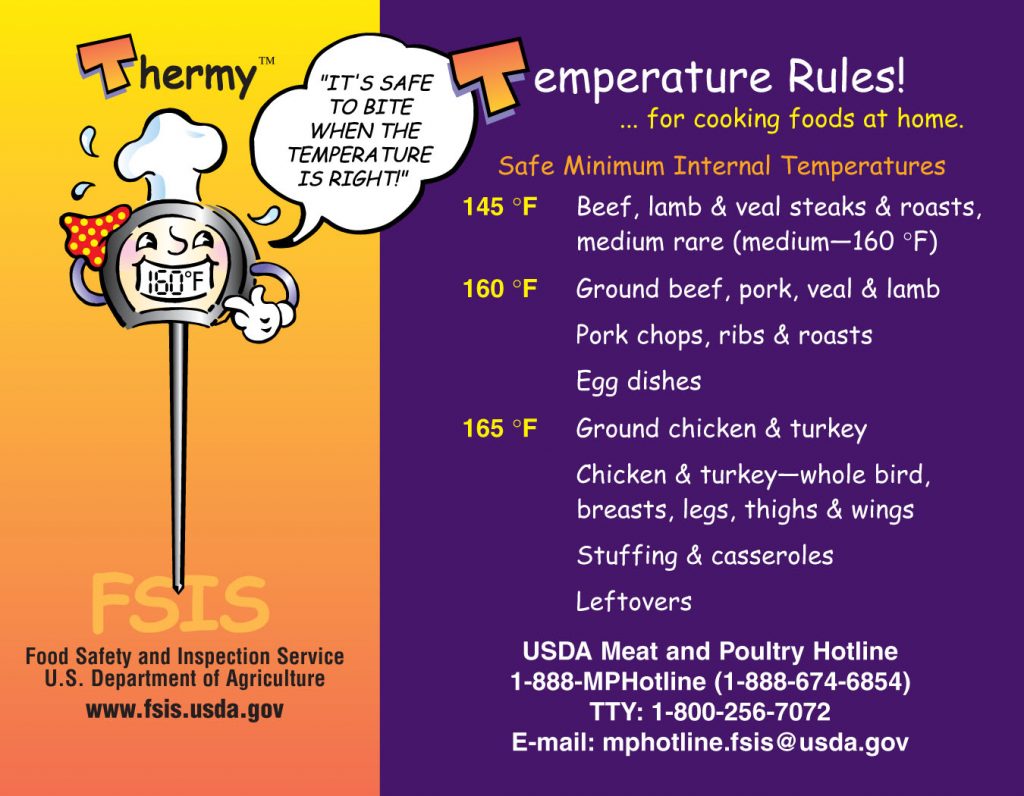
In addition, animal proteins come in various sizes, shapes, and weights depending on where they’re purchased, which can drastically affect cooking time. Purchasing a meat thermometer will take the guesswork out of cooking, possibly save you and your family from being poisoned, and remove stress and worry from out of your life.
Thermopro Digital Instant Read Meat Thermometer: $12.99

This guy won’t break the bank and gives you an instant read on temperature. It’s easy to clean (always wash by hand) and extremely accurate.
Goodbye over or undercooked chicken! My fish is moist and delicate now instead of being the texture of a hockey puck! No joke, I use this almost as much as I use my fancy knives.
Tip: When checking meat temperature, always insert the tip of the thermometer into the thickest, center portion of the meat.
#4 Can Opener
Oxo Good Grips Can Opener: $14.95

As a
A lot of recipes require the use of canned goods, so get yourself a can opener. You don’t need anything fancy. And unless you have extreme arthritis, you don’t need a mechanical version. I’ve had this puppy for years now and it hasn’t failed me yet!
Tip: Don’t be the person who never washes their can opener. Food gets on it every time you open a can! Leaving old food on a can opener could lead to cross-contamination.
#5: Pans, pans, pans
One of the most debated items in the cooking world is which type of pan is the best. The answer is: all of them. It just depends on what you want to cook! I have nonstick, cast iron, and stainless steel pans.
However, if you are new to cooking and don’t want to learn how to care for different types of pans, spend a billion dollars, and want to cook everything in one pan, I would suggest going with cheap nonstick pans. Once you get comfortable with those, you can experiment with others.
Tfal 3 Pan Starter Set: $29.99

Pros
- Super easy to clean
- No food will stick to these puppies
- Requires less to no oil when cooking
- Dishwasher safe
- You can cook anything in these
- They’re cheap as hell
- Excellent quality for the price
Cons
- Can’t achieve searing or browning effect
- Potentially toxic chemicals
- Just so you know, the chemical associated with “teflon flu” was phased out of non-stick pans in 2013. So no need to worry about that.
- Any other potentially toxic chemicals are only released at temperatures at or around 570F (300C). In order to experience symptoms, you’d have to keep your pan that hot for about 4 hours and inhale the fumes.
- May not last as long as higher quality pans
I’ve been using these for years and they work like a dream. They’re like the friend who never asks you for anything, is always there for you, and is low maintenance. This is a good starter set with different sizes to fit your basic cooking needs. However, if you want to take it to the next level…
Tfal 18 Piece Set: $70.00

This set has practically everything you’ll need, including a griddle if you like making pancakes and/or grilled cheeses. Plus, you get saucepans for soups and sauces, a stockpot, some cooking spoons and a spatula. This set would probably work better for someone who is cooking for a family OR a single person/couple who likes to cook in bulk and eat meals throughout the week.
#6 Silicone Cooking Utensils
So you’ve got the knives, the cutting boards, the thermometer, and the pans to cook in, but how are you gonna mix, flip, whisk, anything? Enter…silicone cooking utensils.
Colorful Silicone Kitchen Utensils – Nonstick Cookware with Spatula Set: $22.96

For a lazy new chef, silicone is the way to go. It’s heat resistant, easy to clean, and won’t harm your pots and pans. This set,
#7 Measuring Spoons and Cups
Unless you’re some superhero with the odd ability to gauge what a tablespoon of soy sauce looks like, you will not survive in the kitchen without measuring spoons and cups. There is no recipe known to man that gives directions in handfuls and scoops.

When choosing the type, it really depends on you’re looking for. Do you want them to last for years? Be easy to clean? Easy to store? Have multiple increments of measurement? I will leave all that up to you. All I can tell you is what I’ve used and enjoyed.
Plastic is fine if you want to save bucks, but they tend to degrade quickly. Especially if you’re an idiot like me and don’t realize a teaspoon dropped into the garbage disposal. I also had a set that had silicon lining in the spoons, but over time the lining started breaking off. So here two sets I’ve been happy with:
Sanchow Measuring Spoons Set: $6.99

I love these spoons. They’re stainless steel so they’ve lasted for years and can be tossed in the dishwasher with ease. The middle portion of the spoon is magnetic, so they can stick to most stoves for easy storage and quick use. Finally, they have a flat side that gives you the ability to easily get into spice jars. They’re perfection.
Collapsible Silicone Measuring Cups and Spoons set: $9.96

This set includes both the spoons and the cups so you get more bang for your buck. It’s not exactly like the set I bought where the silicon insert broke apart in the spoons, and from the
I liked these cups because they’re collapsible and therefore easy to store in the cupboard. My only complaints are that they don’t seem to be as accurate as other measuring cups and it’s kinda painful to remove sticky/wet foods from the spoons and cups, i.e. nut
Stainless Steel Measuring Cup and Spoon Set: $9.97

If you don’t care about storage or having an 1/8 teaspoon or cup, get these guys. They’re cheap, easy to clean, and you’ll basically get everything you need. Boom.
#8: Storage Containers
Now that you’ve got all the tools, you’ll be making a lot of delicious food. Where
In choosing storage items, you’re going to need to consider what fits your lifestyle. Are you sending food off with kids to school? Then you probably won’t want to get glass containers cuz kids are clumsy little monkeys.

Do you care about the environment, BPAs, and lasting power? Glass is the way to go. But glass is more expensive, heavier, and runs the risk of breaking. If you have kids, you might just want to use cheapy ziplock storage containers. For everyone else, I’d suggest glass.
Bayco Glass Food Storage Containers: $39.99
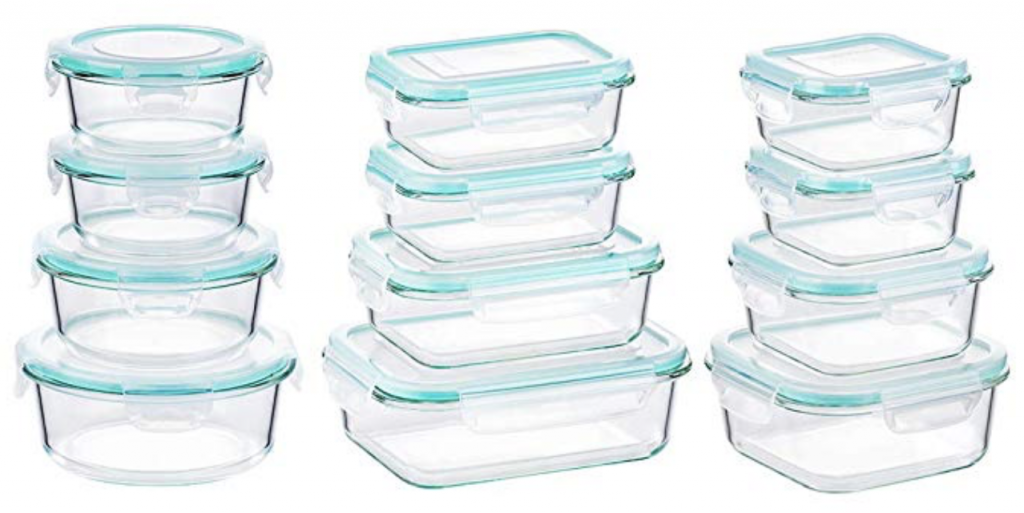
Glass will last! It also won’t stain or get worn down like plastic containers. Also keep in mind that you might be reheating your food in the microwave at work, which won’t be a problem in these babies. The blue ring acts as a seal, so you won’t have to worry about leakage either.
I know these are a bit pricey, but they will pay for themselves in the long run. Otherwise, you can totally find cheaper options made from plastic or other materials.
Get Cooking!
With all these cooking utensils, you’ll have everything you need to be able to feed yourself. Investing in these items will save you money from constant eating out and you’ll make healthy and fresh foods that taste better than what you’d buy already prepared.
